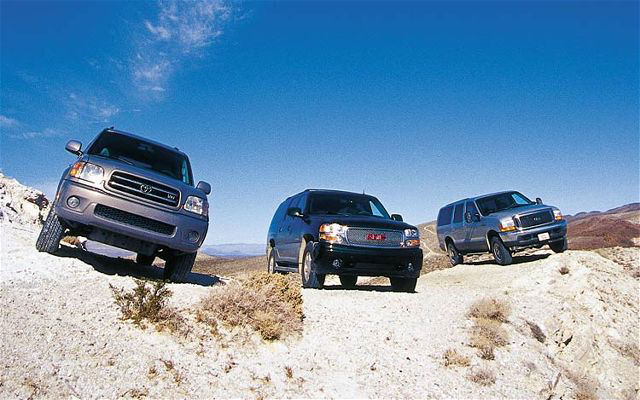[This is the sixth in a series of articles on tax strategies for small businesses and individuals.]
Congress keeps threatening to close some of the long-standing loopholes in the tax law. But one key tax break for business people has remained on the books despite numerous efforts to repeal it. It’s the special tax provision for certain heavy-duty vehicles.
If a client is shopping for a new business vehicle, he or she might cash in on this unique tax-saving opportunity. Plus, the client can use it for traveling over rough terrain this summer, as long as he or she doesn’t overdo the personal use.
Here are the main tax rules of the road. Under Section 179 of the tax code, a business may currently deduct the cost of qualified business property placed in service during the year, up to an annual maximum amount. As things stand now, the maximum Section 179 deduction allowed for 2014 is only $25,000, although it is generally expected that a higher limit will be retroactively restored by legislation at some point this year. In the past few years, the maximum deduction was $500,000.
However, other special rules limit deductions of vehicles used for business purposes. The rules are often referred to the “luxury car limits” even though they apply at relatively low levels for a variety of vehicles. For a vehicle paced in service in 2014, the luxury car limit is $3,160 for automobiles and $3,460 for light trucks and vans. (These figures don’t take any “bonus depreciation” into account. Bonus depreciation technically expired after 2013, but could be revived.) What’s more, the limits are based on 100% business use and must be adjusted to reflect any personal use. Thus, if a client uses a newly-acquired automobile 80% for business in 2014, the appropriate luxury car limit is $2,528 (80% of $3,160).
The luxury car limits also apply in succeeding tax years. For instance, the second-year deduction for a passenger vehicle placed in service in 2014 is $5,100 based on 100% business use. If the business use remains at 80%, the maximum second-year deduction is $4,080 (80% of $5,100).
It’s not like clients who lease cars instead of buying them can escape these limits either. The IRS builds them into inclusion tables that effectively provide similar results.
Fortunately, the tax law also provides a loophole big enough to drive a sports utility vehicle (SUV) through…almost literally. If you buy a vehicle with a gross vehicle weight rating (GVWR) of more than 6,000 pounds – like many heavy-duty SUVs on the market – you aren’t roadblocked by the usual luxury car limits. As a result, you can claim a first-year write-off of up to $25,000 for the cost of an SUV or other vehicle with the required GVWR. The remainder is written off under the usual depreciation rules.
It’s likely that calls to eliminate or curtail this tax break will resurface again this year. Get the word out to clients to act before a revenue-hungry Congress shuts it down, perhaps for good.
Thanks for reading CPA Practice Advisor!
Subscribe Already registered? Log In
Need more information? Read the FAQs
Tags: Income Tax, IRS





